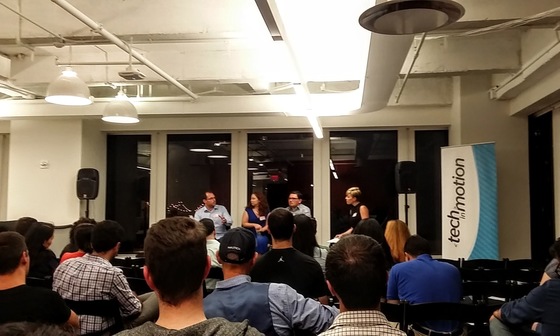Why Legacy Technologies Still Plague Big Companies
By Dennis Clemente
NEW YORK— Rigid architectures, maintenance gaps and lack of updates have plagued many big companies, and may have affected an airline’s recent issue when flights were delayed or canceled. This has put a spotlight on legacy technologies – the topic at Tech in Motion’s meetup last September 22 at the West Monroe Partners offices.
The speakers shared their thoughts on legacy technologies.
Melanie Colton, VP of Product & Technology for Hearst, has transformed and helped to grow Hearst Magazines’ digital business through the delivery of the core content and distribution platform. She has built and modernized Hearst’s approach to product development and technical execution, as well as grown a fledgling organization into a fully functioning product and technology department.
Colton said you do inherit a system when you move from one company to another. When do legacy technologies need to retire? “If it (does) not meet actual business needs of the company (or) things need to rebuilt in a smarter way,” she said. “It was at that moment (we thought) we needed to start over.”
One time, Colton asked questions about old systems in another company she worked for, she was surprised to hear from the employees, “We don’t know (it) but we don’t touch it. No one here knows how to make it work.” Typically, she said, “You don’t understand your system you’re afraid to touch.”
Other points she raised about the problems of legacy technologies:
- Leveraging open source tech is good
- Listen to the whole problem and not just the individual components
- (There’s ) fear and lack of investing
- Some systems are expensive to rebuild
- Organizational issues
Rafael Schloming, CTO and Chief Architect of Datawire, is a globally recognized expert on messaging. Previously, Schloming was a principal software engineer at Red Hat, where he led Red Hat’s technical engagements with the AMQP community. Rafael has a B.S. in computer science from MIT.
Before taking down legacy technologies, Schloming suggests looking for a good fit to solve your problem, and to evaluate the costs.
“(You don’t want to) put a square peg on a round hole,” he said.
A brittle system will not be any good. When that happens, more central governance is needed.
Joe Mongiat, a senior technical architect in West Monroe Partners’ Technology Integration practice, has more than 12 years of experience managing, designing, and implementing technology solutions that help clients realize a variety of business and operational benefits—from scalability and expansion to user productivity to information visibility. “If you think ahead of time, you can avoid costs,” he said.
Look at your organization, what tips the scales—the process and change management? How do you know if you can keep work internally?
“If you build something you have to pay to maintain it. There’s always a balancing act,” he said, adding how important it is to really have a clear vision and road map.
